Poker Hand Rankings: A Complete Guide From Best to Worst
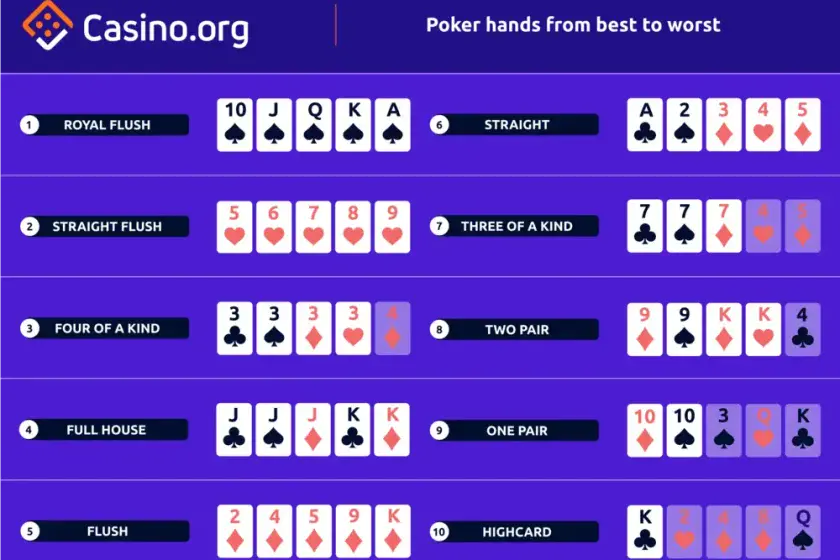
How This Guide Helps You Play Smarter Poker
Mastering the art of poker starts with a deep understanding of hand rankings. This guide will walk you through every crucial aspect of poker hands, including:
- Decoding Poker Hierarchy: Grasp why knowing which hands are best is essential for sound decisions at any table.
- The Legendary Royal Flush: See what sets this unbeatable hand apart.
- The Value of Pocket Aces: Find out why pocket aces dominate as the top starting hand in Texas Hold’em.
- Spotting Strong Hands: Learn how to identify and maximize hands like Four of a Kind and Full House for bigger wins.
Poker is not just luck-it’s also a strategic contest where knowing the ranking and value of every hand empowers you to make confident moves and outsmart your opponents at the table.
This comprehensive resource covers the full progression of poker hand strengths, compares tricky situations, and provides hand selection tips for all skill levels.
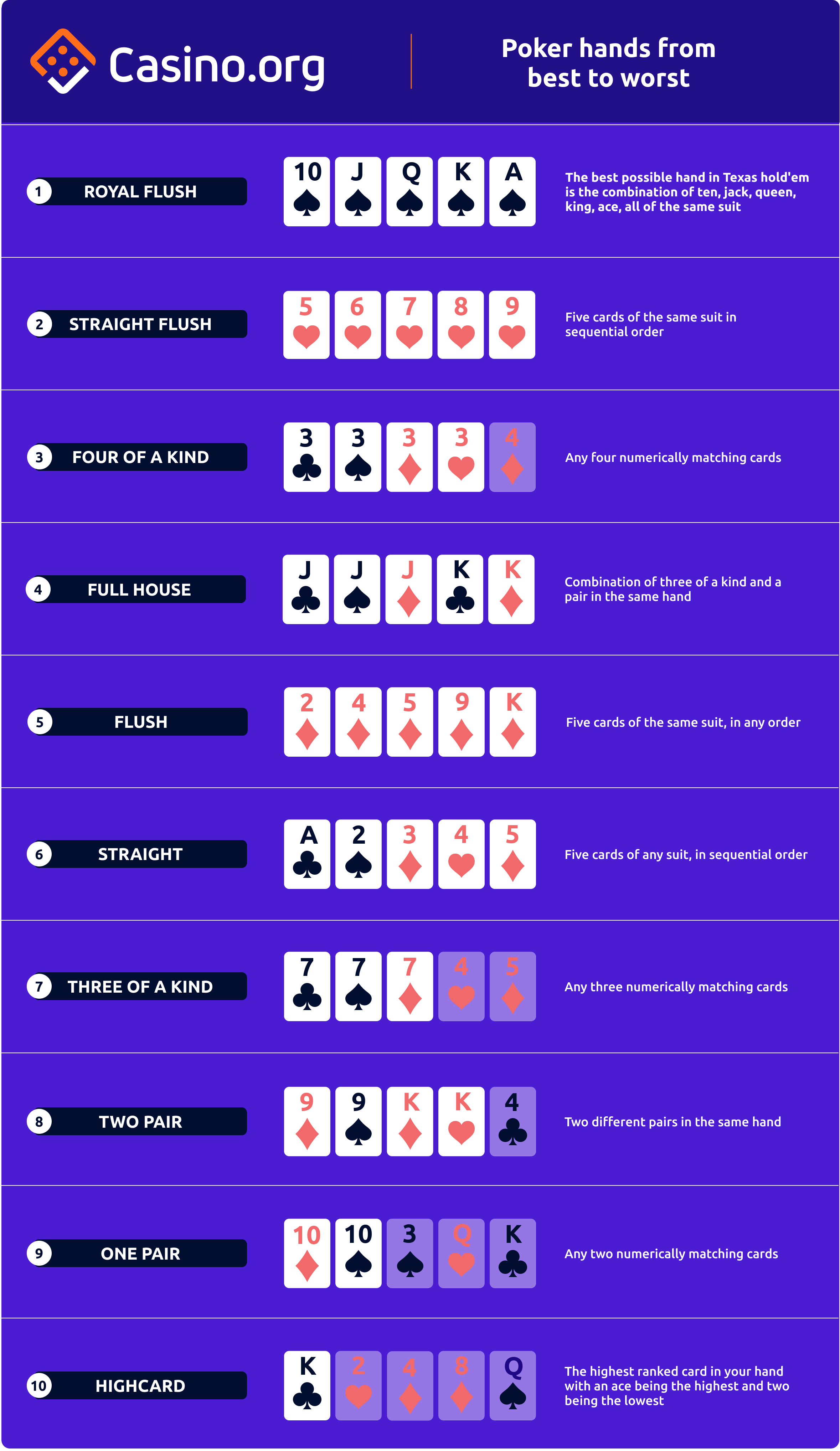
Decoding Poker Hand Rankings: Core Concepts
Poker hand rankings create the foundation for all poker games, both in-person and online. Every hand is evaluated based on an established hierarchy using the standard 52-card deck.
Below is the complete order from highest to lowest:
- Royal Flush: Ace, King, Queen, Jack, and Ten, all matching suits.
- Straight Flush: Five consecutive cards, all of one suit.
- Four of a Kind: Four cards of identical rank, plus any fifth card.
- Full House: Three cards of one rank and two of another.
- Flush: Any five cards of the same suit, not in sequence.
- Straight: Five cards in order, each a different suit.
- Three of a Kind: Three matching cards, two other cards.
- Two Pair: Two pairs of cards plus an unrelated fifth card.
- One Pair: Two cards of the same rank and three other cards.
- High Card: No other combination; the single highest card wins.
It’s important to know that all suits are equal-there’s no suit stronger than another in standard poker rankings.
Why Poker Hand Rankings Matter
Recognizing poker hand values is critical because every decision at the poker table depends on your hand’s strength. Knowing how rare each hand is helps you choose whether to bet, call, raise, or fold with confidence.
For example, Three of a Kind appears only once every 19.7 hands on average. Understanding these probabilities can turn a guessing game into a skill-based strategy.
If players have identical combinations, the winner is usually determined by the “kicker”-the highest non-paired card in the hand. Mastering these rules improves both decision-making and results, whether you play live or online.
The Poker Hand Ladder: Ranked From Highest to Lowest
Every poker player needs to know how their five-card hand stacks up against others. Here is a detailed breakdown of each possible hand from best to worst:
The Unbeatable: Royal Flush

The Royal Flush is the “holy grail” of poker hands: Ace, King, Queen, Jack, and Ten, all in the same suit. It is unbeatable in games like Texas Hold’em and Seven-Card Stud. If two players share this hand via community cards, they split the pot.
Straight Flush: Next Best Thing

A Straight Flush contains five sequential cards of the same suit (e.g., 9♠ 8♠ 7♠ 6♠ 5♠). Ace can serve as the highest or lowest card but never wrap around. The odds of being dealt a Straight Flush are about 1 in 72,193 hands in Texas Hold’em.
Quad Power: Four of a Kind

Four of a Kind, often called “quads,” has four cards of equal rank plus any kicker. When two quads are matched, the kicker decides the victor. Suits do not make a difference in ties.
Full House: Three of One, Two of Another

A Full House combines three cards of one rank and two cards of another (e.g., K♠ K♥ K♦ 7♣ 7♥). The rank of the triplet determines the strength. In head-to-head situations, the higher triple wins, regardless of pair.
Flush: Five Cards, One Suit

A Flush contains five cards from the same suit in any order. The top card in the flush decides whose is superior, followed by the next highest if needed.
Straight: Sequence of Five
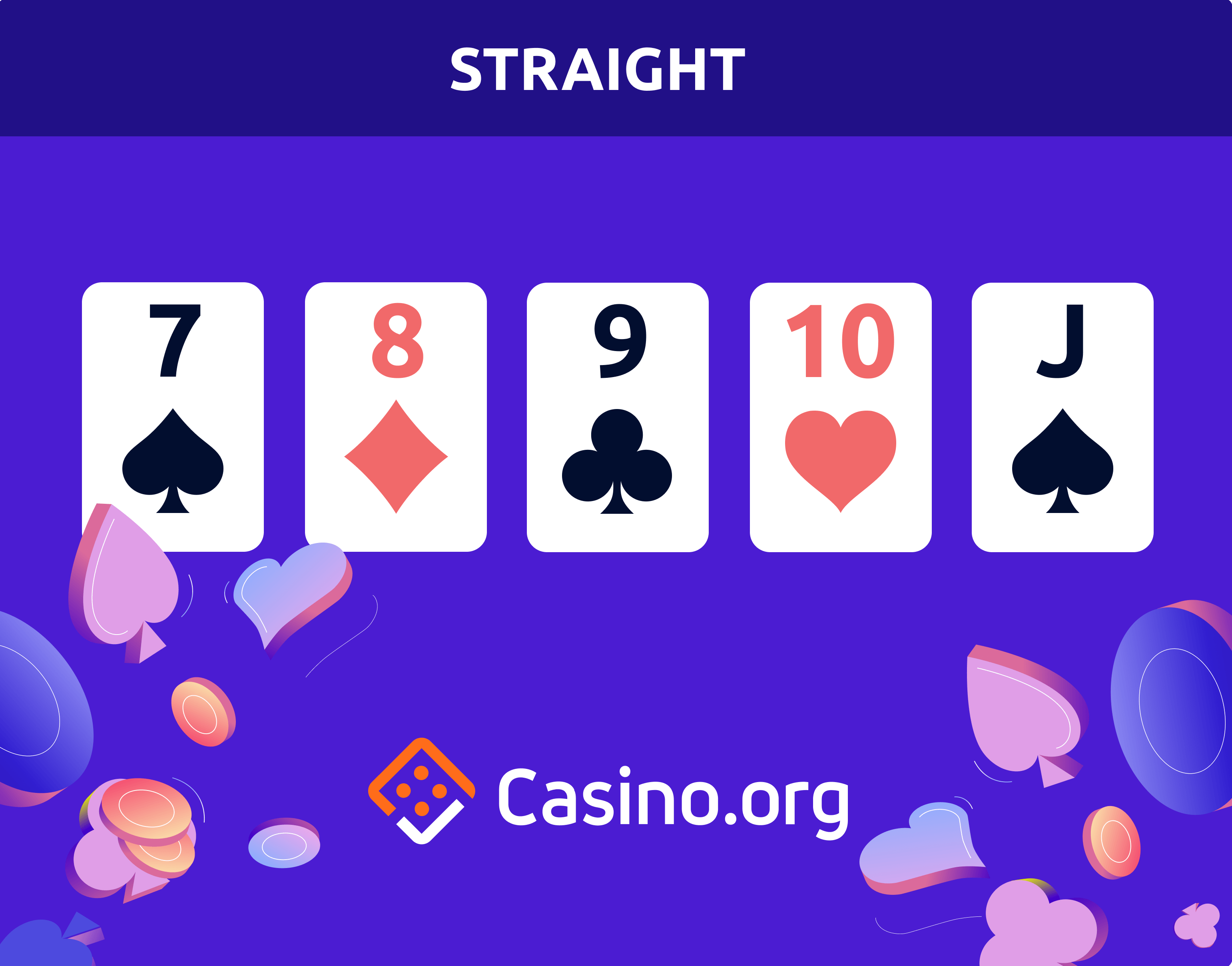
A Straight is made up of five cards in sequence, regardless of suit. For example, J♦ 10♠ 9♣ 8♥ 7♥. The highest card in the sequence determines the straight’s strength.
Three of a Kind: A Triple Threat
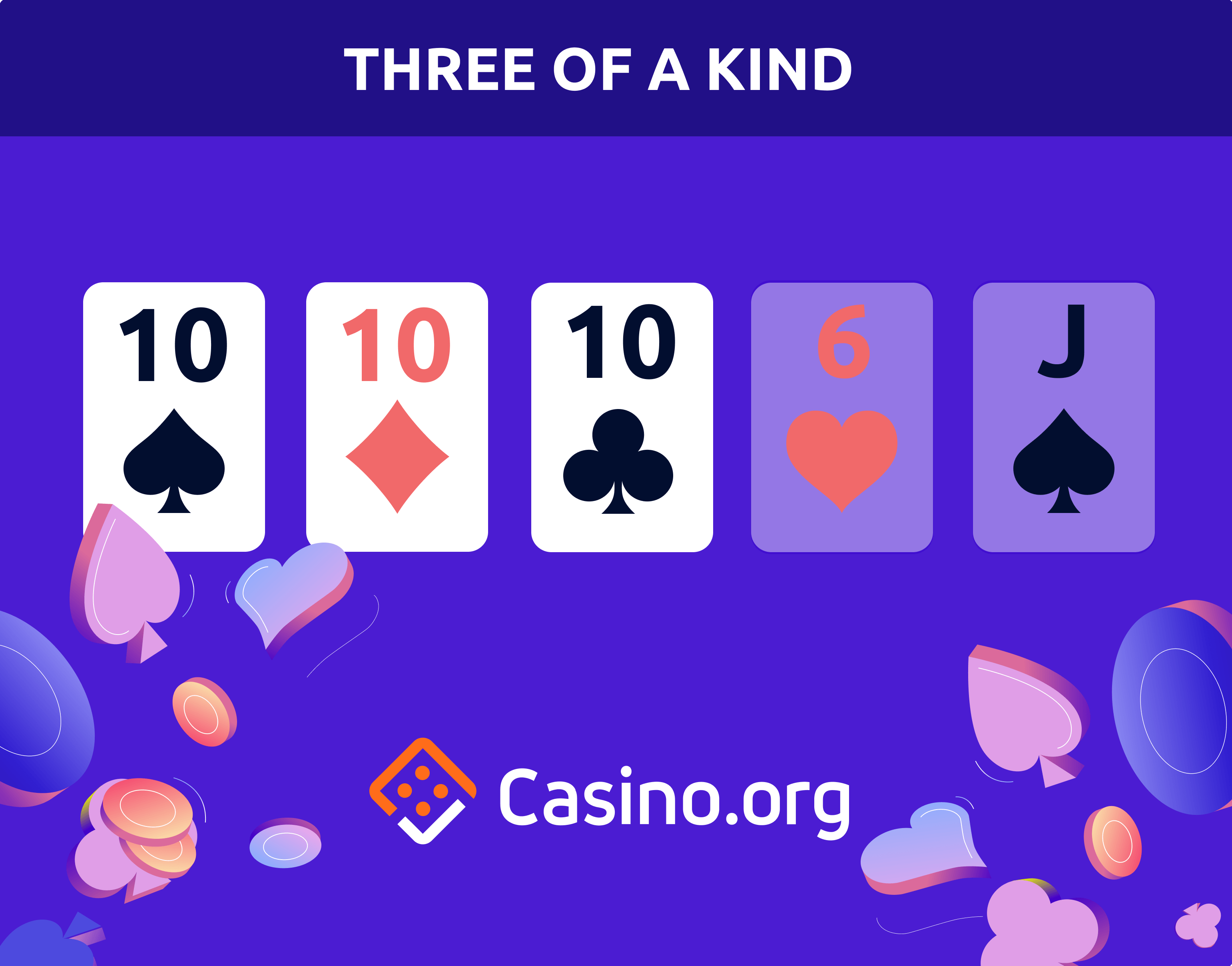
Three of a Kind, also referred to as “trips,” consists of three same-ranked cards and two unrelated cards. The higher the triple, the stronger the hand, with kickers breaking ties if needed.
Two Pair: Double the Danger
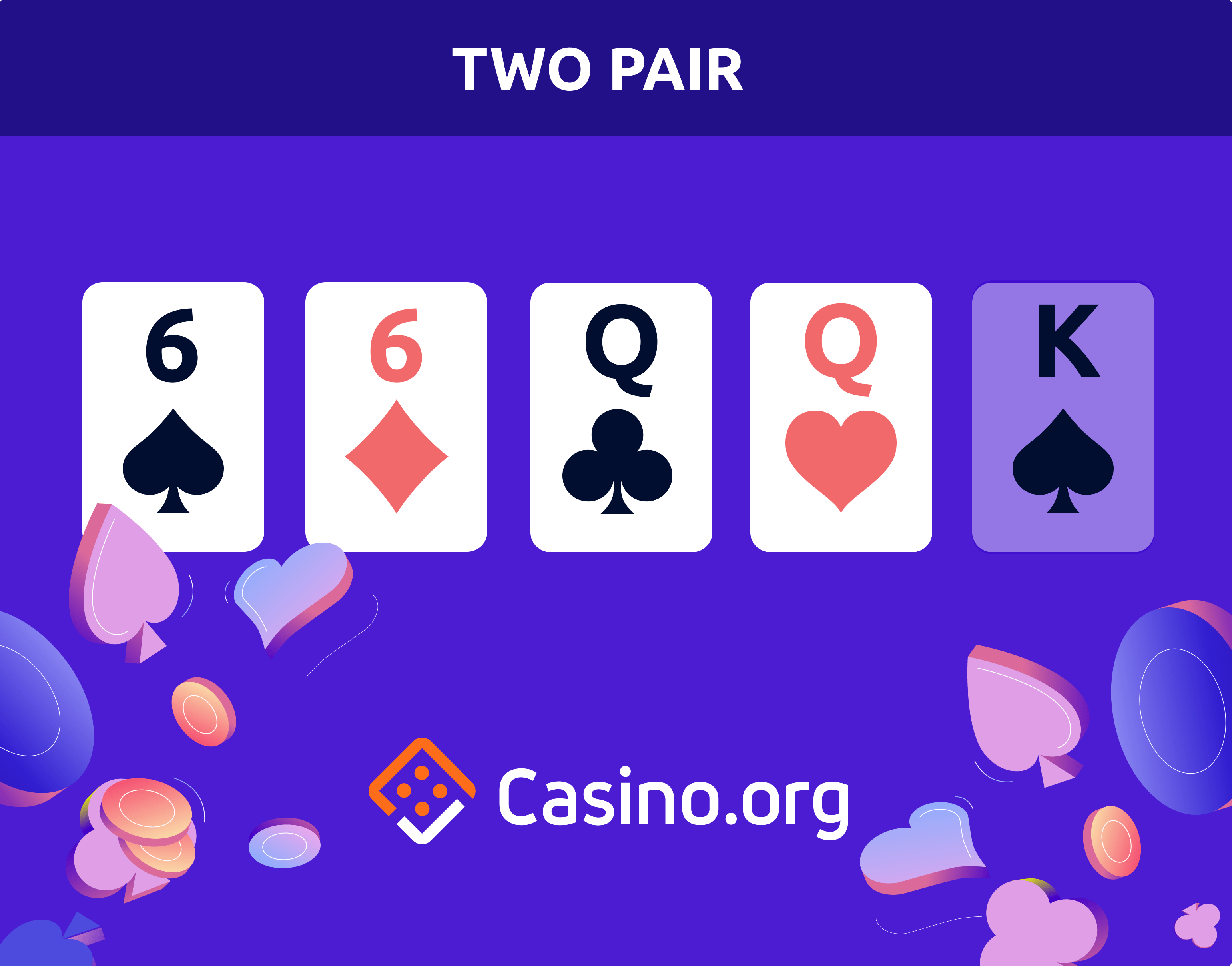
A Two Pair hand has two cards of one rank, two of another, and a fifth kicker. The hand with the highest pair wins. If pairs match, the kicker decides the result.
One Pair: A Simple Match

One Pair is the most frequent combination: two identical cards and three other cards. The value of the pair decides the hand’s power, then the highest kickers follow in resolving ties.
High Card: When All Else Fails

If none of the above combinations are formed, the hand is ranked by its highest single card. For example, A♠ 10♠ 7♣ 4♦ 2♥ is “ace high.”
Comparing Poker Hands: How Ties Are Broken
When multiple players hold hands in the same category, the winner is determined by examining the highest relevant card(s):
- For pairs, higher ranks prevail (e.g., aces beat kings).
- For two pairs, the top pair is compared first, then the second pair, and finally the kicker if needed.
- For straights and flushes, the highest card in the sequence or suit wins.

Let’s look at an example: a hand of 5-6-7-8-9 beats 3-4-5-6-7, and a flush of A♥ 9♥ 7♥ 5♥ 2♥ beats K♥ Q♥ 9♥ 7♥ 5♥.

Similarly, when both hands lack pairs or sets, the single highest card decides the winner.

Head-to-Head Hand Comparisons: Key Matchups
Straight Flush vs. Full House
A Straight Flush, made up of five consecutive suited cards, always outranks a Full House, which consists of three of one rank and two of another. If you’re aiming for the top prize, strive for the Straight Flush-it's extremely rare and extremely strong.
Four of a Kind vs. Full House
Four of a Kind-four cards with the same value-beats any Full House. The higher quad determines the winner if both players have quads, while in Full House duels, it’s the triple that takes precedence.
High Card vs. One Pair
One Pair hand always overpowers a High Card hand. If both pairs are identical, remaining cards known as kickers are used to break the tie.
Kicker Cards: Decider in Poker Ties
A kicker is the highest unpaired card in the hand when players have the same primary combination. Kickers come into play often to determine who wins the pot if the main cards tie.
- Hand: K K 7 7 J - Jack serves as the kicker.
- Hand: A A A 9 5 - Both 9 and 5 are kickers.
If a showdown finds two players with K K T T 7 vs. K K T T Q, the player with the queen kicker claims the victory.
Real-Game Kicker Examples
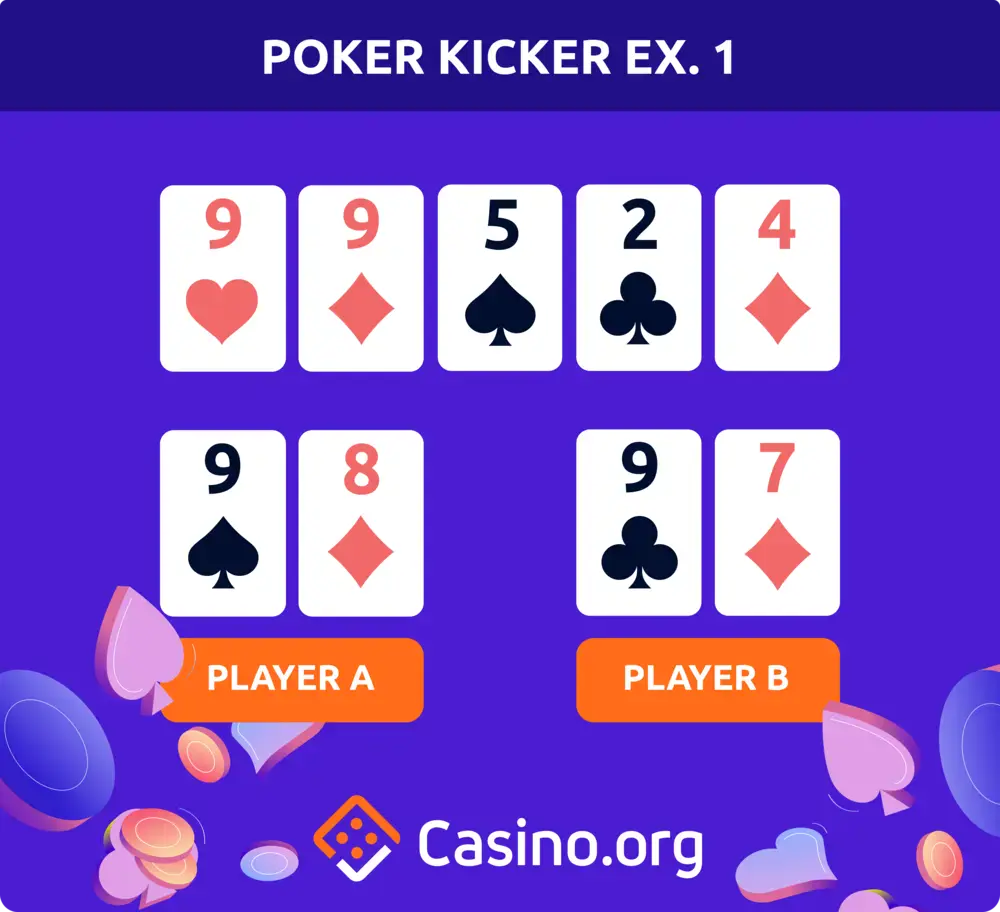
Imagine Player A holds 9-8 and Player B has 9-7 with a board of 9-9-5-2-4. Player A’s kicker (8) beats Player B’s kicker (7), granting Player A the win.

If the board reads 9-9-A-J-2 instead, both players’ best hand would be 9-9-9-A-J, and they split the pot, since their hole cards do not exceed the community cards.
- Kicker only comes into play if it’s higher than the community cards.
- The highest kicker wins ties; matching kickers split the pot.
- You always use the best five-card combination possible.
Securing the Nuts: When You're Unbeatable
“The nuts” refers to the absolute best possible five-card hand at any moment in poker. With the right combination of your hole cards and community cards, it’s sometimes possible to know you cannot be beaten.
For example, holding A♥ 5♥ with a board of 9♥ 7♥ 2♣ 6♣ Q♥ gives you the ace-high flush-the best possible hand for that round.

New players sometimes play cautiously in these spots, but knowing hand rankings lets you play confidently with “the nuts.”
Building a Winning Hand Selection Strategy
Selecting strong starting hands is the cornerstone of successful poker. Rely on the established hand ranking ladder as your baseline for decision-making.
- Royal Flush and Straight Flush are exceedingly rare and most sought after.
- One Pair happens in around 42% of starting hands, providing regular opportunities to build a winning strategy.
- Always consider combinations and kickers, even with common hands like One Pair.
Understanding these principles improves performance in both friendly home games and professional tournaments.
The Significance of Table Position
Your seat at the table directly affects which starting hands you should play. Early positions (closest to the dealer’s left) require more caution and stronger hands. Late positions (closest to the dealer button) give you information about others’ actions, allowing you to enter pots with a wider range of hands and implement more aggressive tactics.
Hand Combinations and the Role of Kickers
A standard 52-card deck allows 2,598,960 unique five-card combinations. Identical main hands are differentiated by kickers-if these are also tied, the pot is shared.
Planning Before the Flop: Poker Pre-Flop Advice
A robust pre-flop game can give you an early edge. While a Straight Flush is highly unlikely before any community card is shown (about 1 in 72,193 deals), suited connected cards (e.g., J♣ T♣) are more valuable than disconnected ones (e.g., 8♦ 4♦), as they improve the chances of making higher-ranked hands after the flop.
Weighing these probabilities allows you to craft sound opening strategies and maximize potential wins.
Poker at a Glance: Handy Reference Sheet

For quick decision-making, keep a poker hand cheat sheet near your gameplay space













